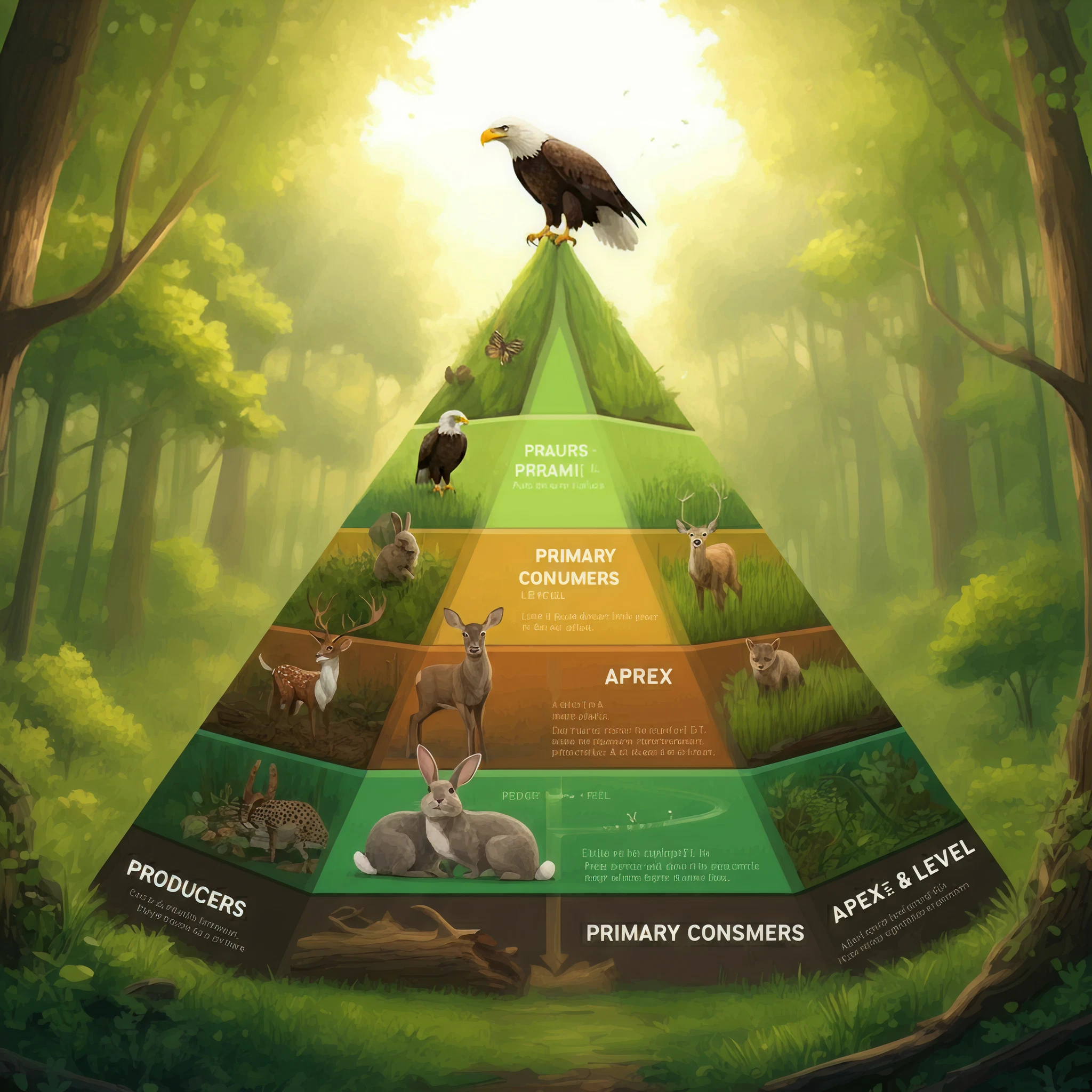Understanding how energy flows in an ecosystem can help you appreciate the delicate balance of nature. One essential concept that explains this flow is the energy pyramid. Below, we’ll break down what an energy pyramid is, provide examples, and show how it works in different ecosystems.
What is an Energy Pyramid?
An energy pyramid, also known as a trophic pyramid or ecological pyramid, is a graphical representation that shows how energy is distributed among different levels of organisms in an ecosystem. It illustrates the energy flow from producers (like plants) to various levels of consumers (like herbivores and carnivores).
Key Characteristics of an Energy Pyramid:
- Shape: The pyramid shape demonstrates that energy decreases as you move up trophic levels, with producers at the base and top predators at the tip.
- Energy Transfer: Only about 10% of energy is passed from one trophic level to the next; the rest is lost as heat.
- Levels:
- Producers (plants, algae): Capture energy from sunlight.
- Primary Consumers (herbivores): Feed on producers.
- Secondary Consumers (small carnivores): Eat primary consumers.
- Tertiary Consumers (top predators): Feed on secondary consumers.
Benefits of Studying Energy Pyramids
- Understand Ecosystem Dynamics: They show how energy diminishes as it flows through a food chain.
- Highlight Biodiversity: Demonstrates the role of organisms within an ecosystem.
- Conservation Awareness: Highlights why top predators are often endangered due to limited energy availability.
Energy Pyramid Example (Forest Ecosystem)
Below is an example of an energy pyramid for a typical forest ecosystem:
- Producers (Base):
-
-
- Plants, such as trees, shrubs, and mosses, capture sunlight to produce energy via photosynthesis.
-
- Primary Consumers:
-
-
- Herbivores like deer, rabbits, and insects consume plants.
-
- Secondary Consumers:
-
-
- Small carnivores, such as birds eating insects or snakes feeding on rodents, fall into this level.
-
- Tertiary Consumers (Apex):
-
-
- Large predators like foxes, owls, or tigers are at the top, feeding on secondary consumers.
-
This structure showcases how much energy it takes to sustain life at higher trophic levels.
Visual Representation:
(Provide an image illustrating the forest energy pyramid with clearly labeled levels for Producers, Primary Consumers, Secondary Consumers, and Tertiary Consumers.)
Energy Pyramid Example (Aquatic Ecosystem)
For an aquatic ecosystem, such as a lake, the pyramid might look like this:
- Producers:
-
-
- Algae and phytoplankton form the base, converting sunlight into energy.
-
- Primary Consumers:
-
-
- Small aquatic organisms like zooplankton eat the phytoplankton.
-
- Secondary Consumers:
-
-
- Fish, such as minnows or sardines, consume the zooplankton.
-
- Tertiary Consumers:
-
-
- Larger predators like sharks or large fish (e.g., tuna) feed on smaller fish.
-
Visual Representation:
(Provide an image depicting an aquatic energy pyramid with examples such as algae, zooplankton, fish, and large aquatic predators.)
Real-Life Importance of Energy Pyramids
- Sustainability:
Energy pyramids illustrate why ecosystems can typically support fewer top predators than primary consumers.
- Human Impact:
Overhunting top predators, clearing vegetation, or polluting water disrupts the pyramid, leading to ecological imbalances.
- Food Chain Awareness:
Understanding the pyramid helps humans make sustainable choices, such as protecting both producers and predators.
Summary
The energy pyramid is a crucial model for understanding energy transfer across a food chain. By protecting each level—especially producers and apex predators—we help maintain the balance of nature.
If you’re an educator, student, or science enthusiast, this concept can help you deeply grasp how ecosystems function. Build your own energy pyramid diagram for local ecosystems to practice identifying the components.
Engage with us in the comments! Share your energy pyramid example or ecosystem diagram ideas below. Here’s to celebrating nature’s balance!








